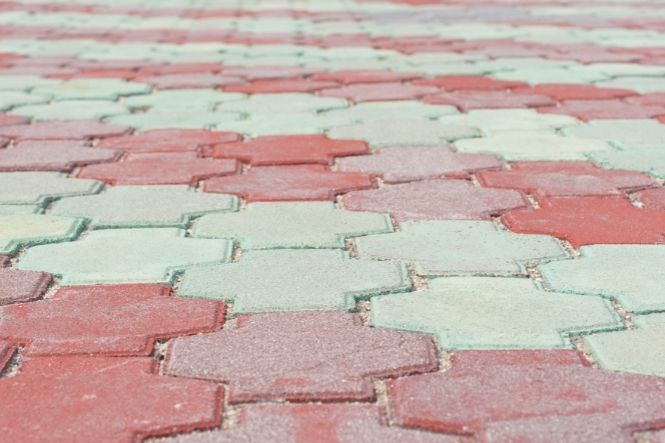Who would have thought that we would be writing a story about a machine that lays roads almost on its own? Certainly not anyone in the Driveway Expert office, who thought that was still in the realms of science fiction. But a Dutch company has gone ahead and made one, calling it the Tiger-Stone.
It may sound like something out of the Jetsons, but this contraption is actually a fully automatic paving machine that can lay blocks of stone onto an existing road.
Table of Contents
The Legacy of Crablogger
Actually, when you look at the machine it isn’t that much of a science fiction marvel but more a wide, moving conveyor belt with a hopper for paving blocks mounted next to it. When a straw poll was taken in the Driveway Expert office, it transpired that the reason we all think road laying machines are a thing of the future is because we all fondly remember Crablogger One.
And that doesn’t mean we’re all very old, although some of us obviously are. No, ‘Thunderbirds’, the Gerry Anderson puppet science fiction TV series, has been repeated often enough for adults of all ages to have picked up on it. For those that missed it, Crablogger One was a huge machine that rampaged through the rainforest (or ‘jungle’, as it was called then) clearing trees for roads and converting them into wood pulp.
Road Laying Dutch Style
Meanwhile, back in the present day, Henk van Kuijk, managing director of Dutch machine manufacturer Vanku, had been thinking about a road laying machine for some time.
But because times were buoyant, there was no time to work on it. Once the economic climate started to cool, van Kuijk found that he had the time to spend developing the machine, which is based on his company’s main product, printing machinery.
How it Works
The Tiger-Stone is essentially a large hopper and conveyor belt which travels along the road slowly. As it moves, the paving blocks are taken from the hopper by hand and placed into the top of the road-wide conveyor belt in the desired pattern. As long as there are enough bricks of the right shape in the hopper, the edge can be done at the same time.
Then the rows of bricks travel down the wide conveyor belt, being gently vibrated to pack them tightly together. The belt is at an angle of about 35 to 40 degrees to the horizontal, with a slight levelling out at the bottom, which allows the blocks to slide off onto the road foundation with the pattern still intact.
What Next?
It’s not clear from the information we have at the moment how the bricks are then secured. But we’re assuming that the blocks are then mortared using some form of Slurry Jointing.
It’s unlikely that the machine would be much of a hit over in the UK. Our roads are probably too diverse in their widths, curves and gradients for the machine to be able to cope with them. It is also too large to be able to be used on most residential driveways. Now that is a real shame, but we’ll be watching developments with interest.
Conclusion
In conclusion , we think that this is a remarkable piece of machinery and would like to congratulate the Dutch company, Vanku, on their invention.

